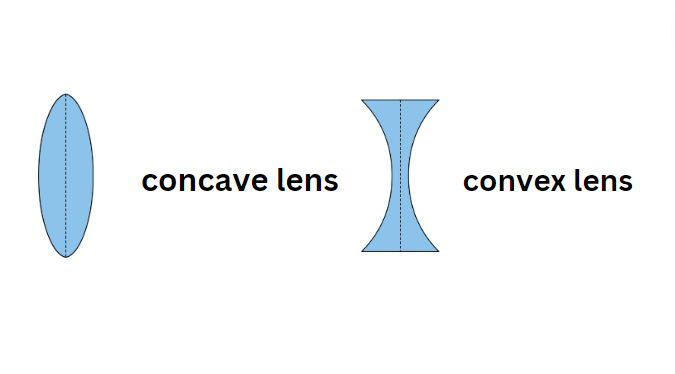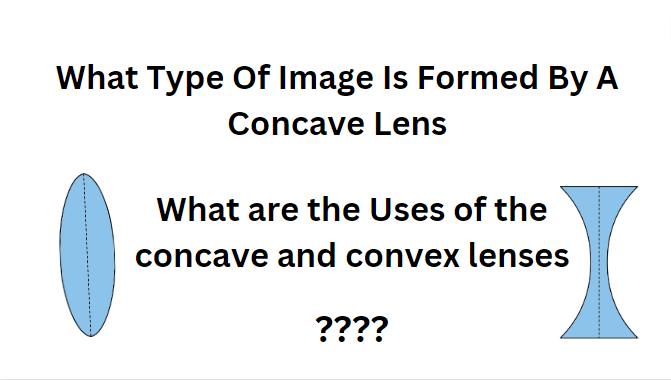This article gives you the proper explanation of the Image formed by a concave lens. This article gives you the exact definition of the concave lens as nobody can change the actual definitions.
After solid research, we finally have given this information related to the Image formed by a concave lens and its uses of the concave lens.
A concave lens, also known as a diverging lens, is a lens that is thinner at the center and thicker at the edges. When light rays pass through a concave lens, they diverge or spread apart.
As a result, the image formed by a concave lens is always virtual, upright, and reduced in size.
The characteristics of the image formed by a concave lens depend on the position of the object relative to the lens and the focal length of the lens. Here are the three possible scenarios:
1. Object beyond the focal point: When the object is located beyond the focal point of the concave lens, an inverted, real image is formed on the same side as the object. However, this image cannot be projected onto a screen since the light rays have already diverged. Instead, the image is formed when the diverging rays are extended backward and appear to originate from a point.
2. Object at the focal point: If the object is placed precisely at the focal point of the concave lens, the light rays will emerge parallel to each other, resulting in no distinct image formation.
3. The object between the lens and the focal point: When the object is positioned between the lens and its focal point, the image formed is virtual, upright, and magnified. The image is on the same side as the object, and it appears larger than the actual object.
Note: It’s important to note that the image formed by a concave lens is always virtual, meaning it cannot be projected onto a screen. Instead, the image is perceived by the viewer as the apparent path of the diverging light rays.
What Is The Use Of The Concave Lens
| Concave Lens has several practical applications due to their unique optical properties. Here are some common uses of concave mirrors: |
Spoken Description:
- Correcting Myopia
- Correcting Accommodation Problems
- Projectors
- Spotlights and Flashlights
- Optical Instruments
- Physics Experiments
Use Of The Concave Lens
Concave lenses, also known as diverging lenses, have several practical uses in various fields. Here are some common applications of concave lenses:
Correcting Myopia: Concave lenses are frequently used in eyeglasses or contact lenses to correct myopia, also known as nearsightedness. The lens helps to spread out the incoming light rays before they reach the eye, allowing for clearer distance vision.
Correcting Accommodation Problems: In some cases, when the eye’s ability to focus (accommodation) is impaired, concave lenses can be prescribed to assist with near vision tasks. These lenses allow for the proper divergence of light, helping the person to see objects at a close range more clearly.
Projectors: Concave lenses are utilized in projectors to spread out and diverge light rays emitted from the light source. By spreading the light, they help create a larger image on the projection screen.
Spotlights and Flashlights: Concave lenses are often used in spotlights and flashlights to control the direction of the light beam. The lens helps to diverge the light, spreading it out over a larger area and creating a wider beam.
Optical Instruments: Concave lenses find application in various optical instruments such as telescopes, microscopes, and cameras. They are often used in the eyepiece of these devices to assist with magnification and focusing.
Physics Experiments: Concave lenses are commonly used in physics experiments to study the properties of light, such as refraction, dispersion, and image formation. They allow for the manipulation and observation of light rays in controlled settings.
Note: These are just a few examples of the practical uses of concave lenses. The specific applications can vary depending on the field and the desired optical properties needed for a particular task.
| Call to Action: These are the places where concave lenses are used in practice. Their properties were used in various places. |

Know more about what is difference between concave and convex lens!
| Concave and convex lens are both types of curved mirrors, but they have distinct characteristics |
Spoken Descriptions
- Shape
- Refraction of Light
- Image Formation
- Vision Correction
The primary difference between a concave lens (diverging lens) and a convex lens (converging lens) lies in their shape and the way they refract light.
Shape: A concave lens is thinner at the center and thicker at the edges, causing it to curve inward. In contrast, a convex lens is thicker at the center and thinner at the edges, causing it to bulge outward.
Refraction of Light: Concave lenses diverge or spread out light rays that pass through them. This occurs because the lens surface is curved in a way that causes the light rays to refract or bend away from each other. Convex lenses, on the other hand, converge or bring together light rays that pass through them. Their curved shape causes the light rays to refract or bend toward each other.
Image Formation: When light rays pass through a concave lens, the resulting image is virtual (cannot be projected onto a screen), upright, and reduced in size. The image appears to originate from the point where the diverging rays intersect when extended backward. In contrast, a convex lens can form both real (can be projected onto a screen) and virtual images, depending on the position of the object relative to the lens. The characteristics of the image formed by a convex lens vary based on factors such as object distance, lens focal length, and placement.
Vision Correction: Concave lenses are commonly used to correct myopia (nearsightedness) by spreading out incoming light rays before they reach the eye, allowing for clearer distance vision. Convex lenses are typically used to correct hyperopia (farsightedness) or presbyopia by converging light rays, aiding in near-vision tasks.
Note: These differences in shape, refraction behavior, and image formation make concave and convex lenses suitable for distinct applications in fields such as optics, vision correction, photography, and various optical instruments.
| Call to Action: These are some important points of difference between concave and convex lenses. both are lens but has more difference between them. |
Our Opinion:
This article takes a lot of knowledge and shares with you everything collected from multiple sources. It also helps you in an external way like daily life knowledge. Apart from marks it also helps to improve your IQ knowledge. It will help you in more places where glasses are used for India’s development.
